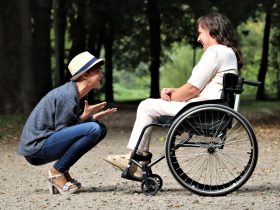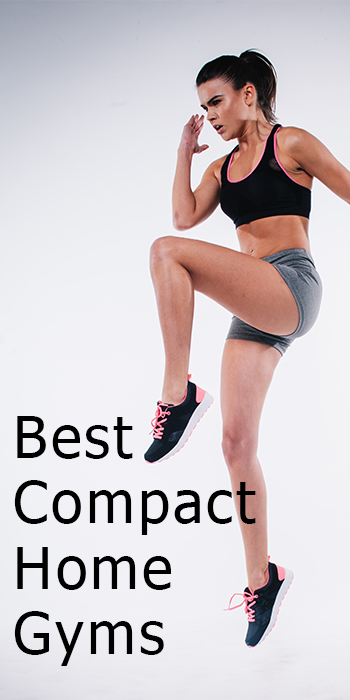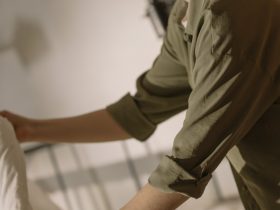Air purifiers come in many shapes and forms. You may have read some of our articles on air purifiers and how they work, if they’re good for allergies etc. If so, maybe you noticed we left out large details on negative ion air purifiers. This was done intentionally, so we could dedicate a whole article explaining the ins and outs of negative ion air purifiers. We’ll also explain the benefits and any potential dangers of negative ion air purifiers. Do negative ion air purifiers work? Find out now.
What are negative ion air purifiers?
Negative ion air purifiers don’t rely on fans to move the air through filters that trap particles. Negative ion air purifiers essentially charge the particles in the room so that they are negatively charged. This means they’ll become attracted to the positively charged plates inside the negative ion air purifier. It’s important to note that negative ion air purifiers have a number of names and this may be confusing. If you’ve heard of them referred to as ‘ion air purifiers’, ‘negative ion air purifiers’, ‘air ioniser’, don’t worry. It all means the same thing and refers to the ionising process these machines use.
How do negative ion air purifiers work?

The negative ion air purifiers send out a stream of negative ions into the. An ion is a particle that has an electrical charge, either positive or negative. The negative ions charge the particles in your house around the air purifier. They all become negatively charged. Thus, they start to become strongly attracted to anything with a positive charge. So the negative ion air purifier incorporates positively charged plates inside of it to attract these negatively charged bits of dust, pollen etc. Some models even use fans to help suck in the negatively charged particles. Most negative ion air purifiers don’t have fans. They are silent with no moving parts.
What does an ioniser do in an air purifier?
Ionisers are what charges and send out the stream of charged particles into the air. They create a static negative charge around the pollutants and allergens that are airborne in your room. Once these particles are charged with negative ions, they stick to the nearest positively charged surface or object they can find. Ideally, they should stick to the collection plates inside the negative ion air purifiers, but this isn’t usually the case. Other charged surfaces like TVs etc will become full of dust and other invisible particles that are now attracted to them. The negative ions that the negative ion air purifier releases also weigh down the pollutants they become attached to. This causes them to fall to the ground and other surfaces.
Benefits of negative ion air purifiers
There are some benefits to negative ion air purifiers. They technically do ‘clear’ the air; as the negative ions attach charge pollutants and allergens in the air, these fall onto surfaces. They can then be hoovered or swept and the air will essentially be free of these contaminants. However, they are still technically in the room, they’re just not airborne. Negative ions can have a positive impact on our bodies, particularly in areas where they occur naturally like waterfalls, rivers, or after storms. This is due to the biochemical reactions our bodies have when in contact with negative ions-they make us feel more energised and revitalised. Negative ions released by negative ion air purifiers can also promote oxygen flow to the brain. This means that in effect, negative ions can increase performance and mental concentration.
Negative ion air purifier dangers
As you’ve probably gathered from this article, there are various negative aspects to negative ion air purifiers. Some of these are simply cons to buying a negative ion air purifier, but some are actually health threats. Some of the ‘less serious’ problems with negative ion air purifiers are that they are too weak to be truly effective. A negative ion air purifier may charge some of the air in a room, but not all of it. They’d need much more powerful ionisers to charge all the air, and the ones on the market simply don’t have this. Further, they don’t have fans so negative ion air purifiers can only realistically ‘trap’ particles near them. Everything else will fall to the ground or stick to other surfaces.

This leads on to the second negative point about negative ion air purifiers. They clear the air but they don’t get rid of allergens and pollutants. For a while, these pollutants will stick to surfaces, giving you the sensation of breathing in clean air. However, with any movement, these charged particles can be swept back into the air again. If you don’t hoover them up or sweep them, they’ll eventually lose their negative charge and become airborne once more. Negative ion air purifiers don’t actually rid the place of pollutants and allergens, making them ineffective, especially for those with allergies or asthma.
Lastly, negative ion air purifiers release gas called ozone as a byproduct. Why is this a negative point?
Is ozone from negative ion air purifiers dangerous?
The simple answer is yes. Ozone is helpful in the atmosphere, as it traps harmful UV rays. But ozone here in your living room is a different matter altogether. Ozone is classified as a harmful lung irritant. Once inhaled, it can lead to damage to the lungs and other things, such as chronic respiratory issues like asthma. If you have breathing problems, stay well away from negative ion air purifiers.
Ozone is a pollutant and an irritant. Even small amounts are too much.
Dr James Sublett, clinical professor at the University of Louisville, fellow at the American College of Allergy, Asthma and Immunology
Are ozone generators safe?
You may be wondering, if negative ion air purifiers release ozone, why are they allowed in our homes? Aren’t there even such things as ozone generating machines that pump out this pollutant all day long? The answer to that, of course, is yes. The Environmental Protection Agency has set standards for six air pollutants that we use and produce, one of them being ozone. If the EPA has had to set standards for it, ozone clearly shouldn’t be something we have in our homes. The National Institute of Occupational Safety and Health (NIOSH) recommends that indoor ozone levels shouldn’t be any greater than 100 parts per billion. Since negative ion air purifiers release less than this, they are considered ‘safe’.
However, imagine there was a new soft drink on the market that had one drop of bleach in each litre bottle. They may say this drop is far less dangerous than a whole cup of bleach, and that ingesting it won’t cause damage since it’s only a drop. But if you drink this soft drink every day, eventually it will add up to a large quantity of bleach in your system. And even a drop of bleach will cause damage in your body that you’re not even aware of. Ozone generators don’t produce ozone as a byproduct, they do it on purpose. So no, ozone generators are not safe for humans to be around. The federal government hasn’t approved its use in occupied spaces. With this in mind, you might feel dissuaded from using a negative ion air purifier which also produces ozone.
In conclusion, do negative ion air purifiers work?
Do negative ion air purifiers really work? We’d argue that they don’t. While they may temporarily and partially clear the air itself, negative ion air purifiers certainly don’t get rid of dust, pollutants, allergens, or contaminants. We’d go as far as saying that negative ion air purifiers pollute the air. They produce ozone as a byproduct. Even small amounts can cause breathing problems and lung irritation. So negative ion air purifiers would actually exacerbate asthma or allergies if you already have them.
We (allergists and immunologists) generally don’t recommend them (negative ion air purifiers)…
Dr James Sublett, clinical professor at the University of Louisville, fellow at the American College of Allergy, Asthma and Immunology
Which air purifiers are safe to use and also effective? Are there any air purifiers that are especially good for allergies and asthma? How do air purifiers that aren’t ionisers actually work? Check out our articles to find answers to these questions and more!

















38 Comments